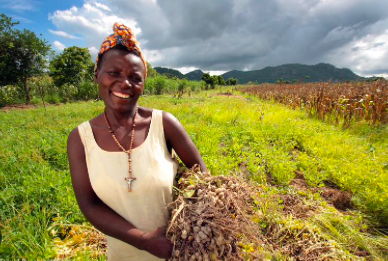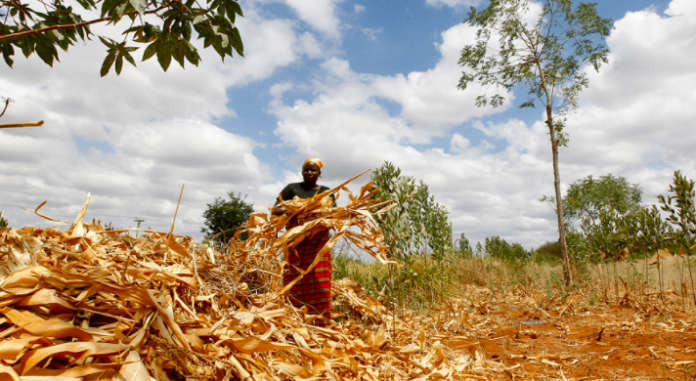By Winnie Kamau
Nairobi, Kenya: In the heart of Kenya’s agricultural heartlands, where the rhythm of life beats in tune with the seasons, a silent struggle unfolds daily. Here, amidst the lush fields and sprawling pastures, farmers toil relentlessly, their hopes and dreams tethered to the land they cultivate. Yet, despite their unwavering dedication, they live under the constant shadow of uncertainty, at the mercy of nature’s unpredictable whims and vagaries of climate change with hope for solutions.
In the recent past Agricultural insurance has been seen as a crucial tool for farmers to protect themselves from natural disasters and uplift their livelihoods. However, despite its potential, agricultural insurance has faced challenges in gaining traction in Kenya, where agriculture plays a central role in the economy.
In Kenya, the history of agricultural insurance can be traced back to 1942 when the colonial administration introduced the Guaranteed Minimum Return (GMR) program to cover specific crops. However, after years of disappointing performance and mounting financial losses, the GMR scheme was terminated in 1978. From the late 1970s until the mid-2000s, there was limited interest among private commercial insurers in Kenya to offer crop and livestock insurance.

The private sector, traditionally seen as the vanguard of innovation and progress, has remained hesitant to fully embrace agricultural insurance. The specter of risk looms large, deterring many insurance providers from venturing into uncharted territory. Moreover, the uptake of insurance among farmers has been dismally low, a testament to the prevailing challenges that beset the sector.
According to the Ministry of Agriculture, Livestock, Fisheries and Cooperatives data shows between 2008 and 2011, Kenya faced a severe drought, resulting in significant economic losses totaling KSh. 968.6 billion. The livestock sector bore the brunt of this loss, accounting for 72% or KSh. 699.3 billion, with 9% of all livestock lost. To mitigate the impact, the Kenyan government is said to have allocated KSh. 4.2 billion for post-disaster interventions during this period.
Over the past five decades, Kenya has experienced 41 major floods, affecting approximately 6.9 million people. Additionally, 12 major drought events occurred during this period. Between 2008 and 2017, the country witnessed an estimated KShs 699 billion in livestock losses and KShs 121 billion in crop losses. On average, the government has spent KShs 4.2 billion per year on disaster relief funding over the past 12 years. In 2017 alone, Ksh 16 billion was utilized, with Ksh 9 billion allocated to maize floor subsidy.
The data also shows Fisheries sub-sector has not been spared, between 1997 and 2000, Kenya faced challenges accessing the European Union market due to the loss of fish handling facilities, leading to the closure of 13 local fish processing factories.
In 2020, heavy rainfall caused flooding, resulting in the destruction of 149,600 ponds nationwide and the loss of seven million pieces of fish valued at KSh. 777 million. Farmers involved in cage culture in Lake Victoria alone suffered an estimated loss of KSh. 500 million.
Kenya, currently through the Ministry of Agriculture in April 2021 adopted the National Agricultural Insurance Policy (NAIP) that holds a promise for the agricultural insurance sector. This policy, if effectively implemented, could serve as a guiding framework for startups and industry players to develop innovative insurance products tailored to farmers’ needs.
Despite these formidable obstacles, glimmers of hope emerge on the horizon. In recent years, there has been a burgeoning interest in agricultural insurance, fueled by a growing recognition of its importance in safeguarding the interests of farmers. Insurance providers have begun to offer an array of products tailored to the unique needs of the agricultural sector.
Insurance companies like APA Insurance through their Crop Cover product provides comprehensive crop insurance policies in Kenya, covering risks like drought, floods, pests, and diseases.
These startups are embracing agricultural insurance to support farmers and enhance their resilience Pula, Acre Africa and Apollo Agriculture.

Pula, partners with insurers and suppliers to offer insurance to smallholder farmers using mobile technology. Acre Africa provides micro insurance solutions based on satellite data and weather information while Apollo Agriculture incorporates insurance components into its platform along with loans and high-quality inputs.
But the road is not with challenges like low awareness and affordability remain formidable barriers to widespread adoption. According to the PWC report on the state of insurance sector, in Kenya there are 43 licensed insurance companies competing for a limited market characterized by low penetration.
Kenyans’ uptake of insurance cover, both at corporate and personal level, remains predominantly in the motor, fire industrial and personal accident (mainly group medical cover) classes. This illustrates a poor attitude towards personal insurance cover in general.
Other challenges captured by the report include low insurance penetration, a lack of savings culture, low disposable incomes, inadequate tax incentives, and a perceived credibility crisis. Legislative and taxation changes have also impacted the industry, including increased capital requirements, solvency margins, and penalties for late settled claims.
Additionally, many insurers are facing skills shortages and are struggling to invest in recruitment and training. Consolidation in the fragmented insurance sector is seen as a potential solution to address some of these challenges and create opportunities for growth.
Many farmers, particularly those in rural areas, are unaware of the benefits of agricultural insurance, while others struggle to afford the premiums.
Legislative and regulatory obstacles, including shifting taxation policies and evolving capital requirements, impede the expansion of the agricultural insurance sector.
Meanwhile, in the bountiful farmlands of Kenya, where optimism is planted with each new season, agricultural insurance emerges as a potent force capable of nurturing a more resilient and prosperous future.














